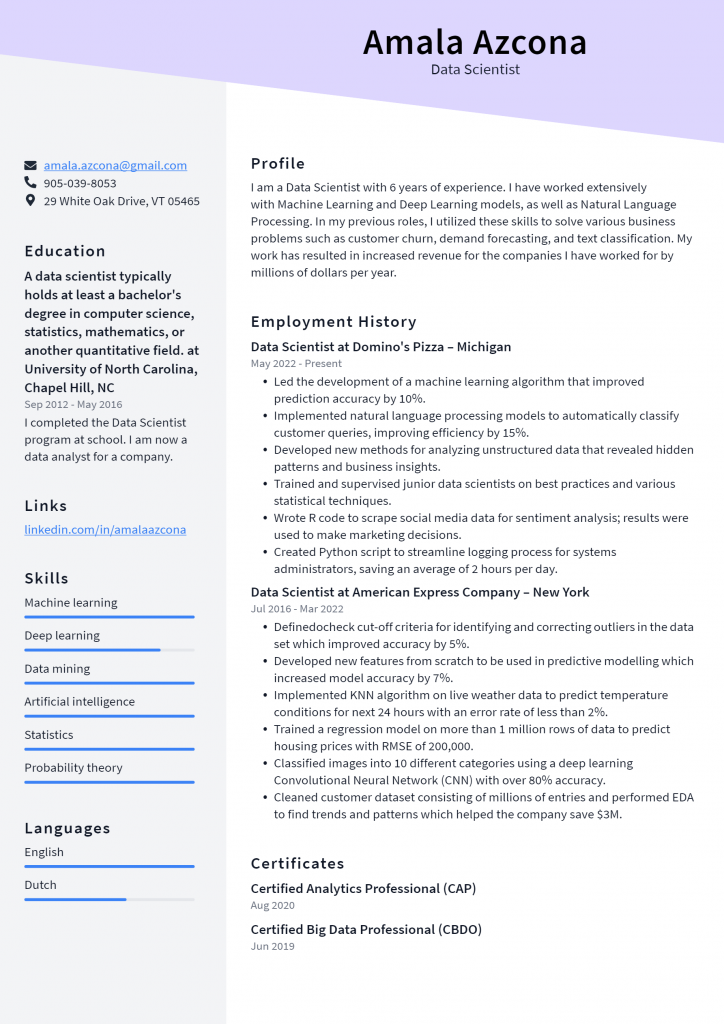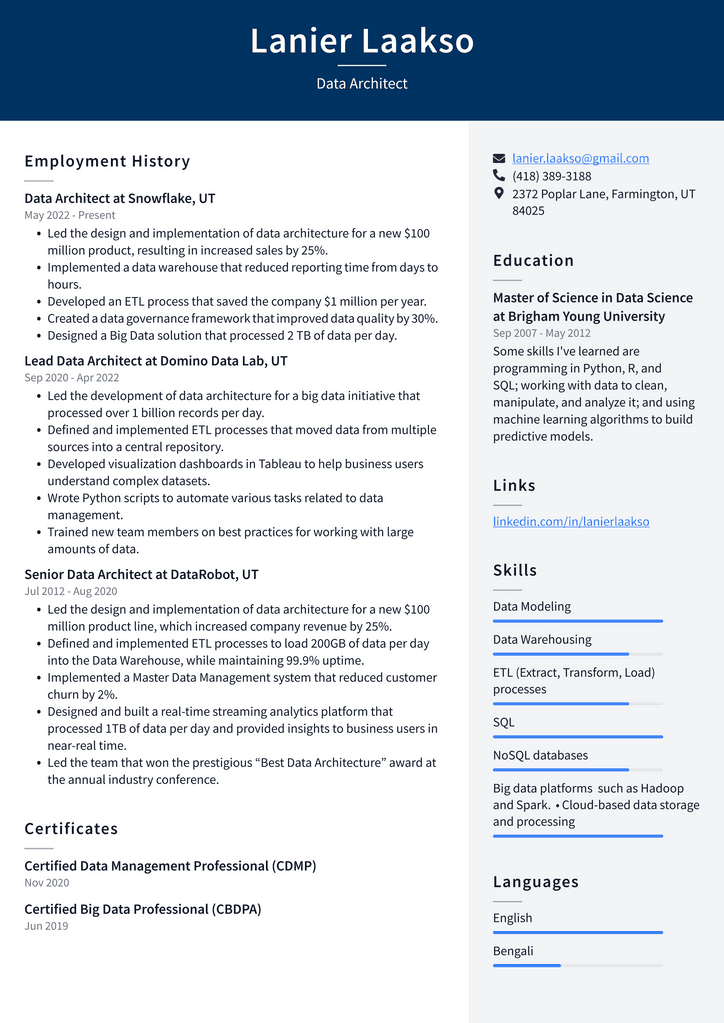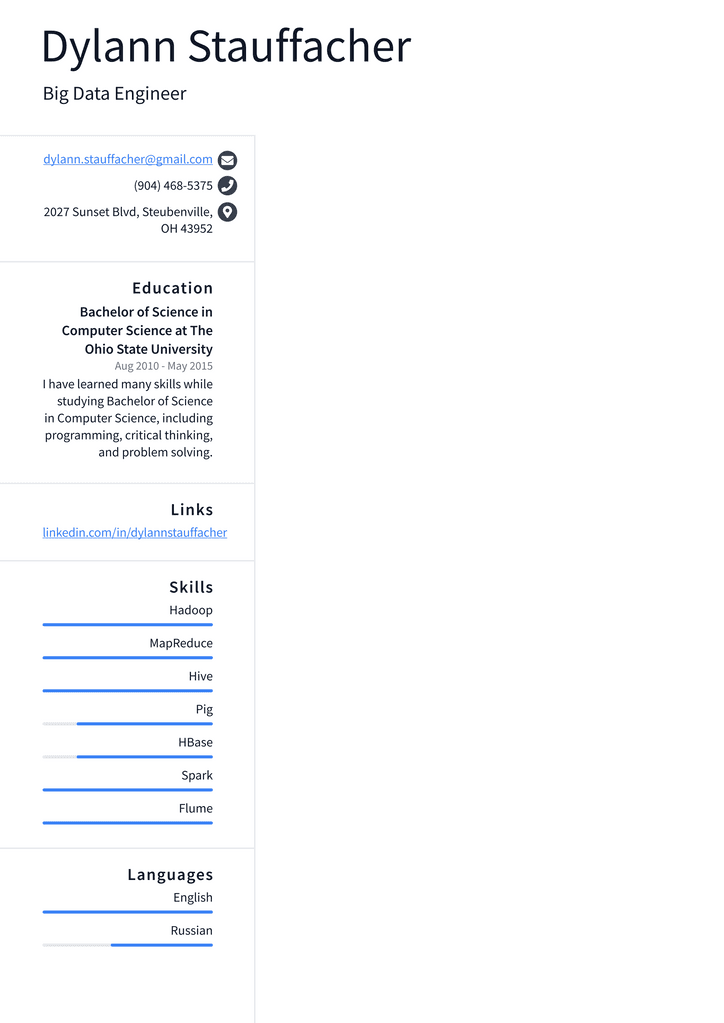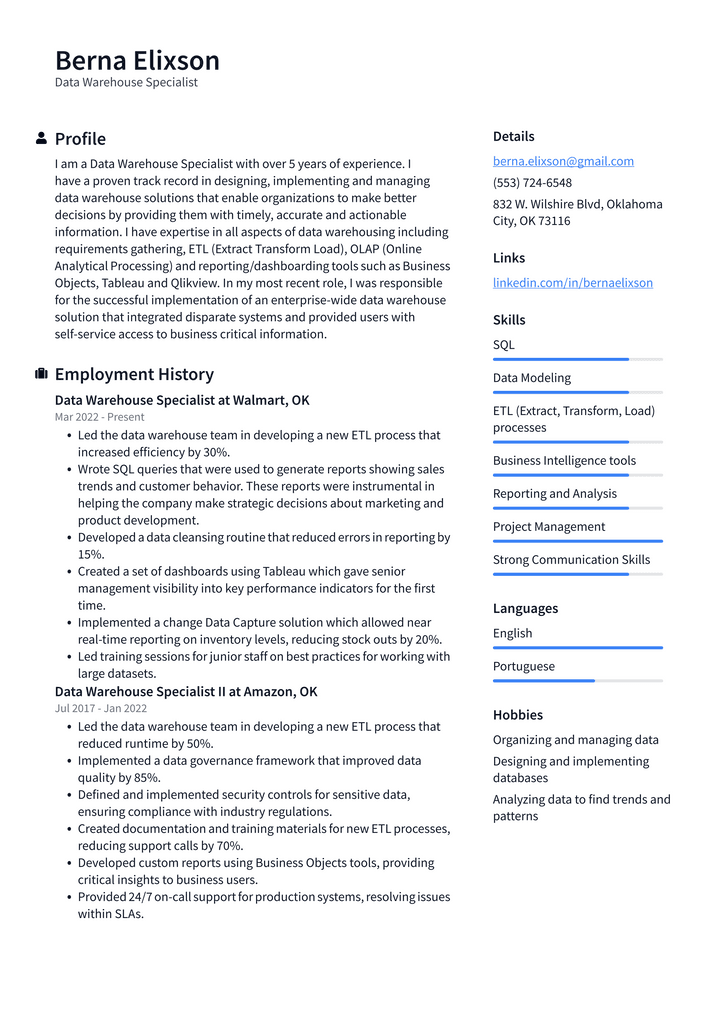Data science is a fast-growing field, with many companies looking to hire data scientists. Even though the job market is highly competitive, this allows you to stand out from the crowd and increase your chances of landing a data scientist job. Redefining the traditional concept of a resume, a data scientist’s resume should focus on your statistical knowledge as well as your technical skills in coding. In addition, your resume should also demonstrate your ability to think critically and solve problems from different angles. With this in mind, creating an eye-catching resume that effectively communicates your skills, experience, and dedication to the field of data science requires some strategic thought and planning. Read on for our expert advice on building your influential data scientist resume.
Data Scientist Resume Example

Download This Data Scientist Resume as PDF
Database Administrator Resume Example

Download This Database Administrator Resume as PDF
Data Analyst Resume Example

Download This Data Analyst Resume as PDF
Business Analyst Resume Example

Download This Business Analyst Resume as PDF
Data Architect Resume Example

Download This Data Architect Resume as PDF
Big Data Engineer Resume Example

Download This Big Data Engineer Resume as PDF
Data Warehouse Specialist Resume Example

Download This Data Warehouse Specialist Resume as PDF
What to include in your Data Scientist resume?
Every field has resume format conventions, which are valid for data science. Keep the following in mind when building your resume: – Education: Include relevant courses, degrees, certifications, and your GPA (if it is 3.5+). – Experience: Include both paid and unpaid work experience. If you are a new graduate, include any coursework related to the field. You can also include any internships or projects that relate to data science. – Skills/Tools: List your skills and show how they are relevant to the job. This may include technical skills, programming languages, statistical knowledge, and machine-learning tools. – Awards: Include any awards or honors that you have received.
Use a professional resume builder
Many job seekers overlook the importance of a well-designed resume. They take a copy of their existing resume and paste it into a Word document, only to find out that it doesn’t look good at all. Instead, it would help if you used a professional resume builder to make your resume even more effective. Several online tools allow you to create an eye-catching data scientist resume in just a few minutes. You can use these tools to create a visually appealing resume that will stand out.
Be clear and concise
There are many different resume formats and practices, but when it comes to data scientists, one thing is sure: longer resumes don’t necessarily have more impact. Many employers are looking for shorter summaries. So, instead of squeezing everything into one page, focus on your most relevant skills and achievements. Narrow down your education and work experience to the essential items. The key is to be clear and concise without sacrificing anything important.
Show your analytical prowess
A data scientist is, first and foremost, a problem solver. This means that you have to show your analytical prowess on your resume. This can be done in several different ways. For example, you could include an achievement from your previous work experience where you had to use data analytics to solve a problem. Or you could consist of a project that you completed while in school.
Show your programming skills
While you don’t necessarily have to list each programming language you’re proficient in, you need to show that you have the skills to code. After all, data science is a hybrid field that combines programming and statistical analysis. Including a programming project, you completed while in school or working will help demonstrate your programming skills. This could be an individual project or a group project. Alternatively, you could include the languages you are proficient in when listing your skills.
Show your passion and commitment
Ultimately, your resume reflects who you are as a person. So, while you need to be clear and concise, you also need to show your passion and commitment to data science. This can be done in multiple ways, like including a mission statement that resonates with you or listing the types of problems you want to solve.
Conclusion
After reading this article, it is evident that creating an effective resume for a data scientist requires statistical analysis, programming, and data visualization skills. The candidate applying for the job of data scientist needs to have in-depth knowledge of statistics and computer programming and the ability to visualize data in different ways. The data scientist’s resume should be designed in a way that highlights the strengths of the candidate. The essential part of any resume is the content. A data scientist’s resume should include information on education, work experience, and skills; it should be designed to grab the attention of recruiters.